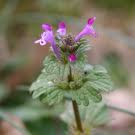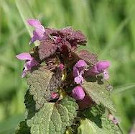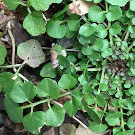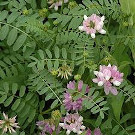9–12 minute read
Routine Care
fertilizing
Fertilize annuals with liquid fertilizer once or twice this month. Do not fertilize perennials, woody plants or subshrubs. Fertilizing now stimulates new growth that will not harden off properly in the fall, increasing the likelihood of frost and freeze damage.
mulching
- Mulch new plantings to a depth of about 1 inch, keeping it away from plant crowns, to conserve moisture and suppress weeds. Deeper mulch can cause drought stress to new plants because the mulch intercepts water meant for the roots. This is especially important here because the only rain we get in the fall is from hurricanes. Otherwise, it is very dry.
- Wait to mulch established plants until early winter after a hard freeze. Because mulch traps heat, heavy mulching in fall is counterproductive. It prevents plants from entering dormancy properly and thus increases susceptibility to winter damage.
- Don’t mulch established peonies. Peonies require a minimum number of chill hours in order to bloom and mulch can keep the crown too warm.
Find the best mulch for your situation
How to apply mulch
tidying
Remove all fallen rose leaves to prevent reinfection with blackspot and other fungi.
watering
Reduce watering somewhat to encourage plants to prepare for dormancy. A little water stress enhances fall color on many trees and shrubs. However, be sure to water foliage plants and plants that will produce flowers or berries in the fall or winter.
houseplants
Prepare house plants to reenter your home. Remember, temperatures of 45°F can damage many tropical house plants.
- Check plants carefully for insects and/or disease. Wash leaves thoroughly and soak the soil in a bucket of water for 3–5 minutes to encourage any insects hiding in the soil to emerge.
- Trim any dead or weak foliage, but wait until spring to repot.
Special tasks
planting & Propagating
Fall is the ideal time to plant and transplant most species. It is also the best time to divide hardy spring- or summer-blooming perennials like iris, daylilies and peonies. Warm soil and cool air let plants focus energy on roots rather than foliage, and because our soil stays warm enough for root growth almost year-round, roots can establish before the heat and drought stress of summer. Although this is the best time of year to move most plants, keep in mind that dry soil is often a problem. Historically, fall is extremely dry unless a hurricane brings rain. Be sure to provide an inch of water weekly if rain fails.
Detailed instructions for all aspects of planting
- Shop for plants early because most retailers do not restock once a plant has sold out.
- Plants experience less stress if moved when the air temperature is cool. Deciduous plants are happiest if installed once the leaves have fallen.
- Wait until spring to plant, transplant or divide tender perennials, most fall-blooming perennials and ornamental grasses, and species that require a full growing season to develop a good root system. Examples are butterfly bushes, tap-rooted plants like baptisias and hybrid purple coneflowers, and slow-growing, fleshy-rooted evergreens like magnolias and camellias. It is fine to plant pansies and chrysanthemums.
- Root-prune any woody plants that you plan to move next spring.
pruning
| Jan | Feb | Mar | Apr | May | Jun | Jul | Aug | ||||||||||
|---|---|---|---|---|---|---|---|---|---|---|---|---|---|---|---|---|---|
| TREES | |||||||||||||||||
| shade | |||||||||||||||||
| bleeder | small branches | ||||||||||||||||
| fruit | |||||||||||||||||
| SHRUBS | |||||||||||||||||
| summer-blooming | after bloom | ||||||||||||||||
| spring-blooming | after bloom | ||||||||||||||||
| broadleaf EG | dieback | ||||||||||||||||
| needle EG | |||||||||||||||||
| HERBACEOUS | |||||||||||||||||
| grasses | |||||||||||||||||
| flowers | pinch, deadhead | ||||||||||||||||
- Do not prune. Pruning now will promote tender new growth that cannot survive the cold.
- Continue to deadhead annuals and perennials. Let hips develop on roses to signal that winter is coming.
soil Test
It is a good idea to test your soil every 2–3 years so that you can adjust pH and fertilize more accurately. Testing is free from April–November. You can pick up and drop off soil boxes, forms, and sampling instructions 8am–5pm M–F in the lobby of the Extension Office: Bonnie B Davis Center, 1020 US-70W.
Learn more about soil testing
problems
pests
Beneficial insects share the same plants as insect pests. To protect beneficials, use low-toxicity pesticides when possible, spray only if needed and spray at dusk when pollinators are no longer active. Always read and follow label directions for safe pesticide application.
Click on a pest name in the pest calendar below to learn more.
| Jan | Feb | Mar | Apr | May | Jun | Jul | Aug | Sep | Oct | Nov | Dec |
|---|---|---|---|---|---|---|---|---|---|---|---|
| Emerald ash borer | |||||||||||
| tent caterpillar | |||||||||||
| black vine weevil | |||||||||||
| spider mites | |||||||||||
| scales, slugs | |||||||||||
| aphids, lace bugs | |||||||||||
| bagworm | pick bags | ||||||||||
| boxwood leaf miner | |||||||||||
| ironweed longhorn borer | |||||||||||
| flatid planthopper Japanese beetle CATERPILLARS: genista broom moth silvery checkerspot fall webworm | |||||||||||
| twospotted spider mite kudzu bug | |||||||||||
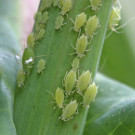 Aphids are usually green but can be many other colors. They attack tender new plant growth. Fortunately, they can be washed off with a forceful stream of water. Severe infestations can be controlled with the relatively environmentally benign insecticidal soaps.
Aphids are usually green but can be many other colors. They attack tender new plant growth. Fortunately, they can be washed off with a forceful stream of water. Severe infestations can be controlled with the relatively environmentally benign insecticidal soaps.
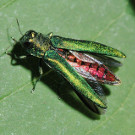 Emerald ash borers have been confirmed in Orange County. They attack all species of native ash as well as our native white fringetree. The top of the crown begins to thin and partially die (sprouting from the main stem of the tree may also occur), followed by death within 2–5 years. While the borers spread a few miles per year by flight, the main route of spread is from contaminated firewood. Interstate movement of EAB-host wood and wood products is prohibited for all of NC. However, movement within our state is not. Please be cautious when purchasing or accepting firewood, wood chips, etc. if you suspect that your trees are infected, please report the location and descriptions of potentially infested trees to 800-206-9333 or newpest@ncagr.gov.
Emerald ash borers have been confirmed in Orange County. They attack all species of native ash as well as our native white fringetree. The top of the crown begins to thin and partially die (sprouting from the main stem of the tree may also occur), followed by death within 2–5 years. While the borers spread a few miles per year by flight, the main route of spread is from contaminated firewood. Interstate movement of EAB-host wood and wood products is prohibited for all of NC. However, movement within our state is not. Please be cautious when purchasing or accepting firewood, wood chips, etc. if you suspect that your trees are infected, please report the location and descriptions of potentially infested trees to 800-206-9333 or newpest@ncagr.gov.
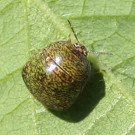 Kudzu bugs are a new pest from India and China that look somewhat like an olive lady beetle. They feed on all types of legumes (note that wisteria is a legume) and congregate on figs, magnolias, bronze fennel, redbuds, roses and peppers. Because they are so new, control strategies are still experimental. Carefully brushing them into soapy water is one approach (they release an irritant when crushed). Some predatory insects like assassin bugs and predatory stink bugs appear to be finding them, which may help to control population size.
Kudzu bugs are a new pest from India and China that look somewhat like an olive lady beetle. They feed on all types of legumes (note that wisteria is a legume) and congregate on figs, magnolias, bronze fennel, redbuds, roses and peppers. Because they are so new, control strategies are still experimental. Carefully brushing them into soapy water is one approach (they release an irritant when crushed). Some predatory insects like assassin bugs and predatory stink bugs appear to be finding them, which may help to control population size.
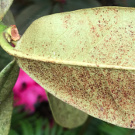 Lace bugs can attack new growth, usually only on azalea/rhododendron, but sometimes on pyracantha, cotoneaster, quince or hawthorne. Dark spots about the size of a pinhead on the lower leaf surface are diagnostic. The best defense is to plant genetically resistant varieties and to maintain plant vigor. For control of severe infestations where there is no evidence that natural predators are present, repeated applications of insecticidal soap or horticultural oil can be effective. When a history of lace bug infestation exists, insecticides can be applied to the lower leaf surface, usually two applications approximately two weeks apart. Monitor the plants about once a month for reinfestations.
Lace bugs can attack new growth, usually only on azalea/rhododendron, but sometimes on pyracantha, cotoneaster, quince or hawthorne. Dark spots about the size of a pinhead on the lower leaf surface are diagnostic. The best defense is to plant genetically resistant varieties and to maintain plant vigor. For control of severe infestations where there is no evidence that natural predators are present, repeated applications of insecticidal soap or horticultural oil can be effective. When a history of lace bug infestation exists, insecticides can be applied to the lower leaf surface, usually two applications approximately two weeks apart. Monitor the plants about once a month for reinfestations.
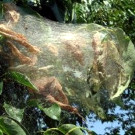 Fall webworm infestations resemble those of tent caterpillars, but the timing and location differ. Tent caterpillars are active in spring and make their webs in tree crotches, often in wild cherry. Fall webworms appear in mid to late summer and form webs at the ends of branches. Although webworms can completely defoliate a tree, healthy established trees usually suffer no permanent injury. Treatment can be beneficial for young, newly-planted trees. Fall webworm populations are usually kept at low levels by their many natural enemies, such as birds, predaceous insects like assassin bugs and parasitic insects like parasitic wasps.
Fall webworm infestations resemble those of tent caterpillars, but the timing and location differ. Tent caterpillars are active in spring and make their webs in tree crotches, often in wild cherry. Fall webworms appear in mid to late summer and form webs at the ends of branches. Although webworms can completely defoliate a tree, healthy established trees usually suffer no permanent injury. Treatment can be beneficial for young, newly-planted trees. Fall webworm populations are usually kept at low levels by their many natural enemies, such as birds, predaceous insects like assassin bugs and parasitic insects like parasitic wasps.
 Twospotted spider mites enjoy hot, dry weather and can attack many different species. They are difficult to see without a magnifying lens. Symptoms include bleaching, stippling and webbing on leaves. A strong spray of water on leaf undersides can offer some control. For more severe infestations, consider insecticidal soaps or horticultural oil spray.
Twospotted spider mites enjoy hot, dry weather and can attack many different species. They are difficult to see without a magnifying lens. Symptoms include bleaching, stippling and webbing on leaves. A strong spray of water on leaf undersides can offer some control. For more severe infestations, consider insecticidal soaps or horticultural oil spray.
weeds
For common weeds not mentioned below, try this weed gallery. You can check for the toxicity, groundwater risk and persistance of many weed products in Toxicity of Lawn Chemicals.
- Killing or removing weeds before they seed is critical for control. This is especially important for the two new 'superweeds' below. While both are annuals, they are extremely aggressive and produce copious seed, rapidly colonizing your yard if left unattended.
- Watch for winter annual weeds. Hand-weed, apply preemergent in September or October when night temperatures are consistently 55–60° or apply a selective post-emergent when the temperature is above 40° all day long. Post-emergents are most effective when weeds are actively growing. While spring is best, you can also apply them in the fall while the weed is establishing its winter rosette.
- Treat perennial weeds such as wild onion and wild garlic with a broadleaf herbicide when temperatures are above 50°. Be careful to distinguish mock strawberry, an invasive alien, from our native barren strawberry.
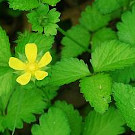 weed mock strawberry
weed mock strawberry wildflower barren strawberry
wildflower barren strawberry - Control invasive vines and unwanted tree saplings.
- For saplings that are too large to pull, cut off close to the ground and clear away debris. Immediately paint or spray the exterior and the cut surface with a 15–25% solution of glyphosate --- waiting more than 5 minutes can prevent absorption. For a larger stump, only the outer two-thirds is live wood and needs treatment.
- English ivy control differs by season. In fall, hand-pull vines and re-visit periodically to remove any residual new growth. In spring, hand-pull or use herbicide.



